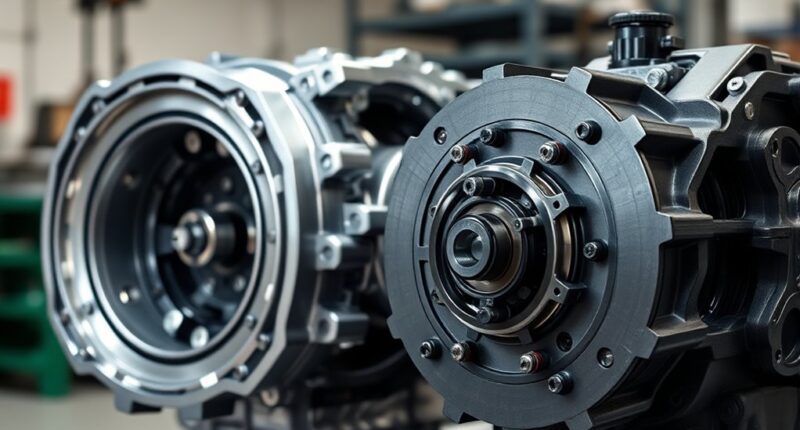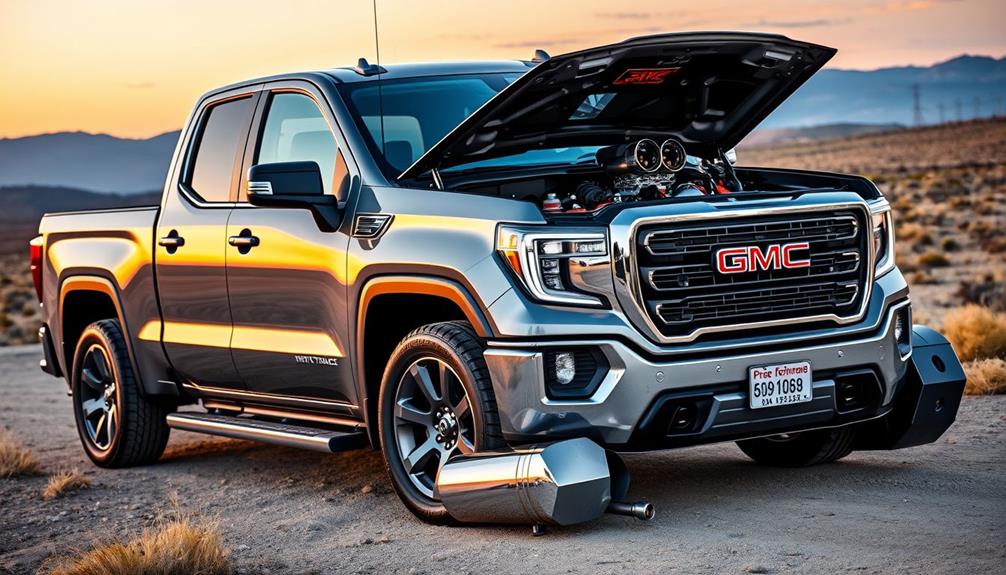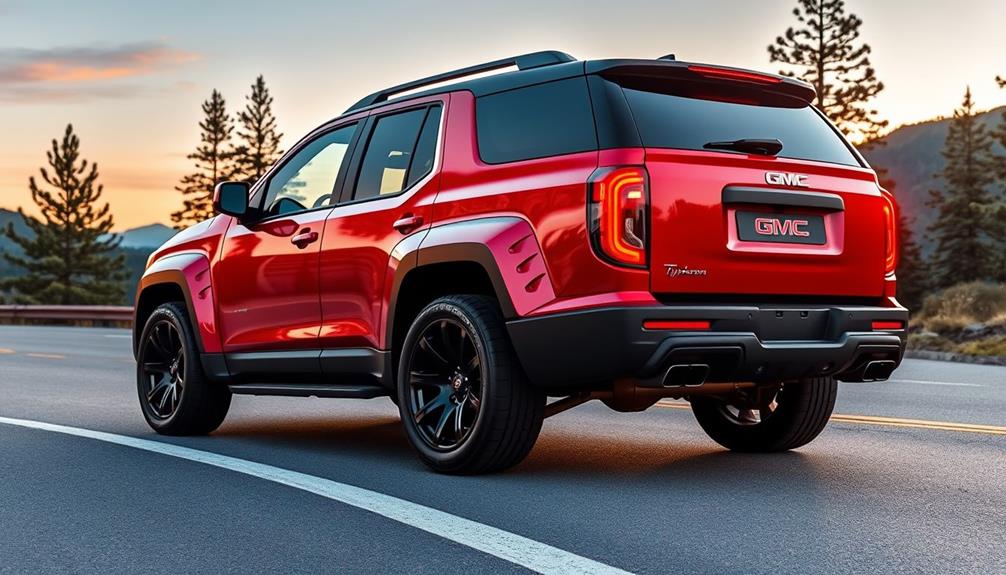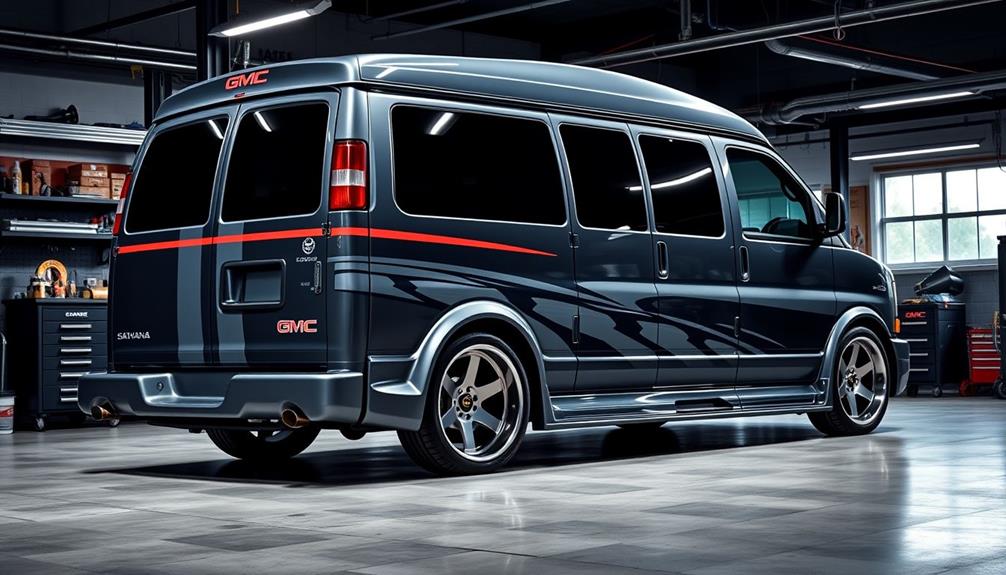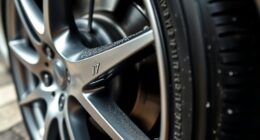If you’re choosing between the GM 8L90 and 10L80 for boosting your vehicle’s performance, consider your driving style and needs. The 8L90 offers a balanced mix of efficiency and strong torque, making it ideal for everyday driving with some performance gains. The 10L80 emphasizes rapid acceleration and handles high loads better, perfect for demanding or high-performance use. To find out which fits your goals best, explore how each transmission’s features align with your driving expectations.
Key Takeaways
- The 8L90 offers a balanced mix of performance and efficiency, ideal for daily driving and moderate high-performance use.
- The 10L80 provides faster acceleration and higher torque capacity, suitable for extreme performance and demanding driving conditions.
- 8L90’s robust construction ensures reliability and longevity in regular use, while 10L80 is built for resilience under harsh or high-stress environments.
- Choose the 8L90 for versatile applications with smooth shifts, or the 10L80 for maximum performance and high-power demands.
- Your decision depends on whether you prioritize a balanced drive (8L90) or aggressive, high-performance boosting (10L80).
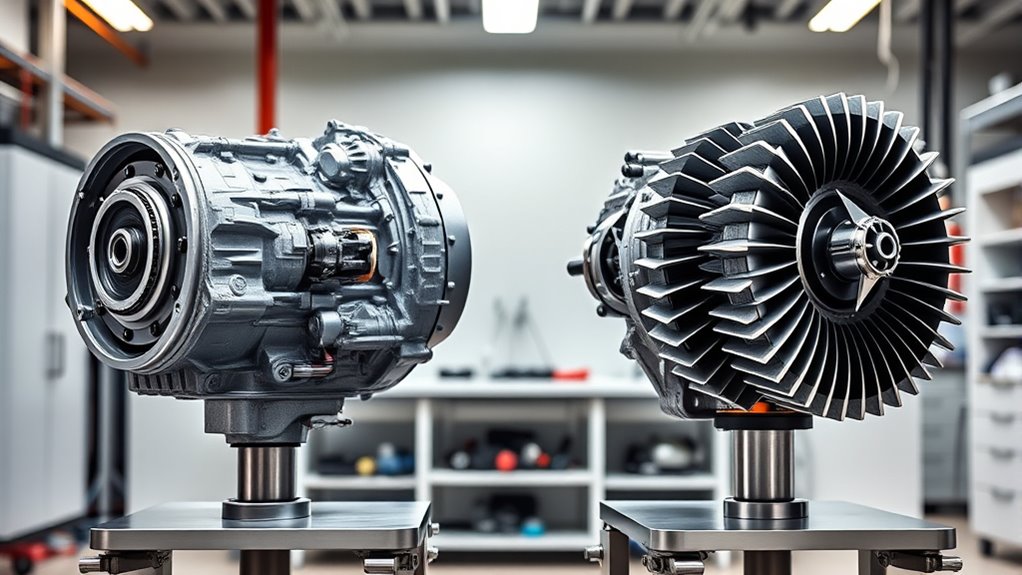
When comparing GM’s 8L90 and 10L80 gearboxes, it’s clear that both are advanced automatic transmissions designed for high-performance vehicles. These gearboxes are engineered to deliver smooth shifts, impressive speed, and exceptional control, but they differ in key areas that can influence your choice. One of the most notable differences lies in their gear ratios, which directly impact acceleration, fuel efficiency, and overall driving experience. The 8L90 features a set of gear ratios optimized for a balance of performance and efficiency, providing quick acceleration and seamless shifts across a range of speeds. Its gear ratios are designed to deliver strong torque at lower speeds while maintaining highway efficiency at higher speeds. The 10L80, on the other hand, offers a different set of gear ratios that prioritize rapid acceleration and high torque capacity, making it especially suitable for demanding driving conditions and high-performance applications. Additionally, the gear ratios influence shift smoothness and overall driving comfort, which are crucial for a refined driving experience.
Durability is another critical aspect where these gearboxes stand apart. The 8L90 is known for its robust construction, with heavy-duty components that ensure longevity even under intense use. It incorporates high-strength materials and advanced engineering to resist wear and tear, making it a reliable choice for daily driving and long-term service. The 10L80 takes durability a step further, designed to handle even higher torque loads with reinforced internal parts and advanced cooling systems. Its construction emphasizes resilience against harsh conditions, ensuring it can withstand the stresses of aggressive driving, towing, or high-power setups. You’ll find that both transmissions are built with quality materials, but the 10L80’s enhanced durability features make it particularly suited for extreme performance environments where reliability under pressure matters most.
Frequently Asked Questions
Which Gearbox Offers Better Fuel Efficiency Under Boost Conditions?
When considering which gearbox offers better fuel efficiency under boost, you need to focus on efficiency gains during high power demands. Both options can improve fuel economy with the right tuning, but generally, the 10L80 might provide smoother shifts and better efficiency gains at higher boost levels. Your choice should depend on how you prioritize fuel economy and performance, ensuring you get the most out of your boosted setup.
How Does Each Transmission Impact Vehicle Handling and Ride Quality?
You’ll notice that the gearbox impacts handling dynamics and ride comfort markedly. The 8L90 offers smooth shifts that enhance stability, giving you confident handling at high speeds. Meanwhile, the 10L80’s design prioritizes a refined ride, absorbing bumps and uneven surfaces better. Both transmissions improve overall ride quality, but your experience depends on whether you value sharp handling or a more comfortable, cushioned ride.
Are There Specific Vehicle Models Better Suited for the 8L90 or 10L80?
Imagine slipping into a vehicle perfectly tailored for your driving style. Certain models, like heavy-duty trucks and high-performance cars, are more compatible with the 8L90, offering robust power and durability. Meanwhile, the 10L80 suits lighter, sporty vehicles, especially those with aftermarket upgrades aiming for smooth shifts. Choose your vehicle based on compatibility to maximize performance and upgrade potential, ensuring your ride meets your boosting ambitions perfectly.
What Are the Maintenance Differences Between the Two Gearboxes?
When comparing maintenance, you’ll find that both gearboxes require regular fluid changes and filter replacements to keep them running smoothly. The 8L90 might need more frequent fluid changes due to its higher performance, while the 10L80’s design could mean easier filter access. You should check manufacturer recommendations for specific intervals, but overall, staying on top of fluid and filter upkeep guarantees longevity and ideal performance for either transmission.
How Do the Gearboxes Perform in Extreme Weather Conditions?
They say “what doesn’t kill you makes you stronger,” and that applies to gearboxes in extreme weather. The GM 8L90 offers better thermal resilience, handling high temperatures with ease, and has superior corrosion resistance, making it reliable in harsh conditions. The 10L80 also performs well but may need extra protection. Both gearboxes are built tough, but your choice depends on your climate challenges.
Conclusion
So, whether you prefer the proven reliability of the 8L90 or the cutting-edge innovation of the 10L80, it’s funny how both gearboxes promise ultimate performance. You might think the latest tech guarantees superiority, but sometimes, the classics surprise you with their durability. In the end, your choice depends on what you value more—tradition or innovation. Either way, you’re still trusting your ride to a box of gears—surprising how simple that decision really is.
